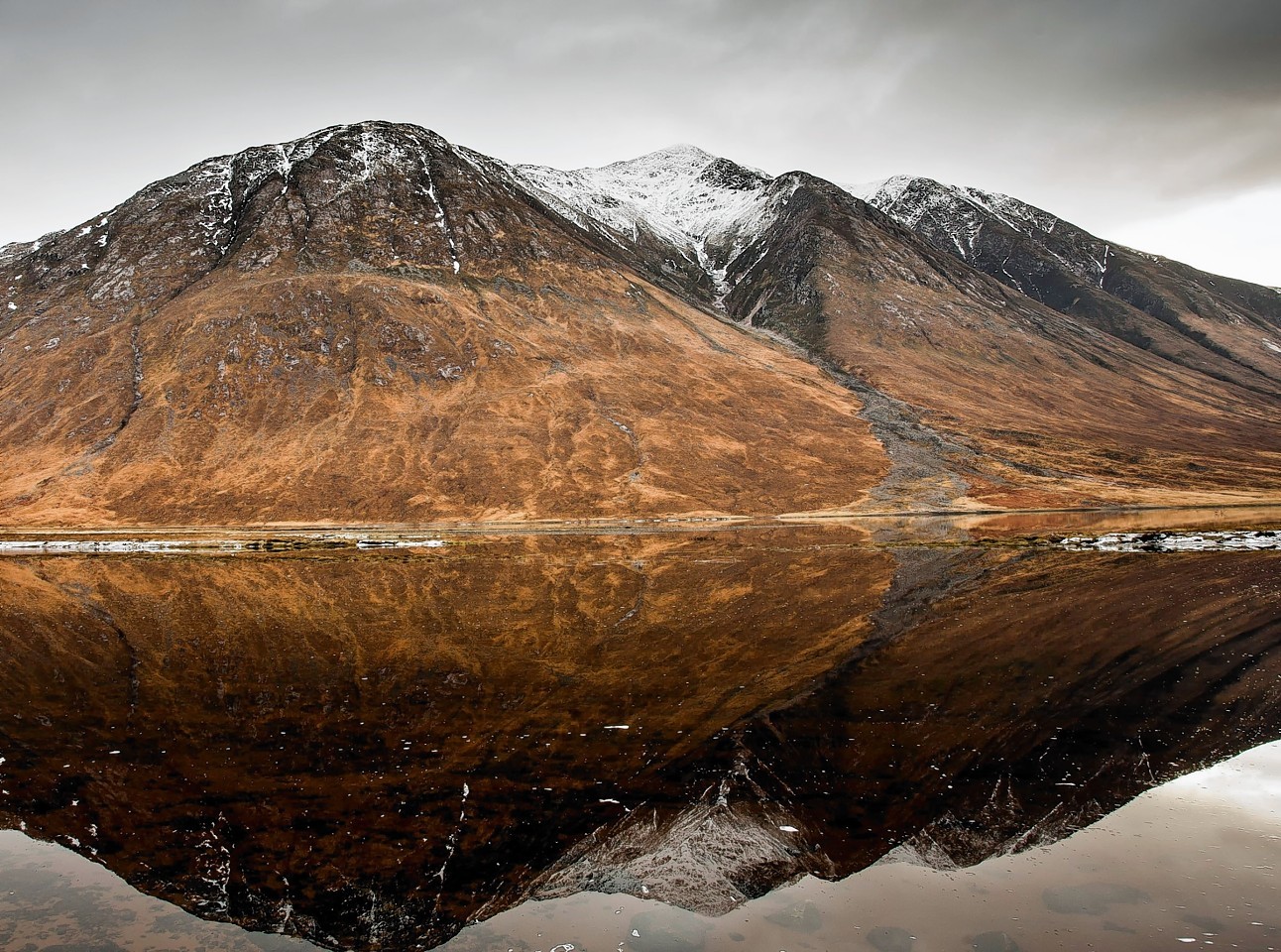Rescuers braved lightning, torrential rain and landslides searching for a climber lost in the mountains.
But the hunt ended in tragedy when the missing man was found at the bottom of a gully on “challenging” Ben Starav by a helicopter crew.
It is believed he took a wrong turn while descending the 3,537ft peak in Glen Etive in poor visibility and plunged about 70ft to his death.
Almost 40 members of three mountain rescue teams, two helicopters and search and rescue dogs were involved in the hunt.
The man’s body was found and recovered by the crew of the Royal Navy Sea King helicopter from HMS Gannet at Prestwick after what rescuers described as a piece of “brilliant” flying.
The climber, who has not been named, is understood to have been in his 50s and a visitor to the area.
It is believed he was an experienced mountaineer and well equipped.
The man had been walking with a male friend, but his companion turned back, leaving him to carry on alone.
A spokesman for the Lochaber rescue team said: “Conditions were difficult as Ben Starav is a very complex mountain with very challenging terrain.
“The weather did not help, with frequent lightning strikes all around the mountain.”
Glencoe Mountain Rescue Team leader John Grieve said: “This is the second fatality in exactly the same spot.
“After a death a few years ago, I went up to look at the area and it is very deceptive from the summit in the mist.
“This walker went up the north ridge. On the way back down, there’s another ridge slightly to the side, which looks identical, and, if you take that one, you get on to very difficult ground.
“It looks as though he has taken the wrong ridge – just a very easy navigation mistake.
“It very quickly leads you into Coire Lotha, which is very difficult ground, with steep gullies and big faces. It’s a nasty place to end up.”
Mr Grieve said: “The man with the sore leg came down the hill and the other man went on.”
The dead man was reported overdue about 8pm on Saturday, and Mr Grieve said five team members started a search but had to give up around 4am on Sunday because of bad weather.
Mr Grieve said: “There were a lot of heavy showers and the burns were in spate, making it very difficult going.
“The search resumed at about 8am on Sunday with the assistance of Lochaber Mountain Rescue Team and the RAF Lossiemouth helicopter, Rescue 137.
“We also asked Oban Mountain Rescue Team to search the other side of the mountain as it is easy go down the wrong way in the mist and we had the Sarda (Search and Rescue Dogs Association Scotland) dogs out searching.”
There were 39 mountain rescue team members and six dogs scouring the ground, with a helicopter covering the areas they could not reach.
During the operation, the RAF helicopter left to refuel and the Royal Navy helicopter replaced it.
Mr Grieve said: “It was a big search of a very complicated area. Soon after 1.15pm, the helicopter crew spotted him lying in a steep gully above a crag, which was a very difficult place to get into.
“Lochaber and Glencoe team members made their way to above him and the helicopter flew up some gear so two of them could abseil down and secure the body. The helicopter then lifted him out.
“We had thunder and lightning, but we were lucky with the weather on this side of the mountain.
“Although it was very wet, the worst of the weather held off until about 10 minutes after he had been recovered.
“They had torrential rain, with floods and landslides on the other side of the mountain.”
Oban Mountain Rescue Team faced torrential rain and lightning as they searched the south side of the ridge.
Some team members had to be rescued themselves by helicopter after rivers filled up and blocked their routes back.
Ross Lilley, a deputy leader with Oban Mountain Rescue Team, said: “We went to Glen Kinglas at the bottom of the hill on the south side and deployed five teams of two to walk all the main routes we thought might be used if they came off our side.
“There was a thunder storm in the middle of the day. A couple of our teams were caught in amongst the lightning on the ridge, and they took precautions by keeping off the exposed ridge tops as much as possible.
“All the rivers filled right up as the water poured off the hill. Two teams got stuck on the wrong side of them and we had to use the helicopter to get them back across.
“Conditions were bad, but people get lost in bad weather, that is what we train for and what we are prepared for.”
